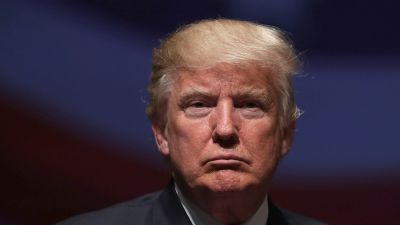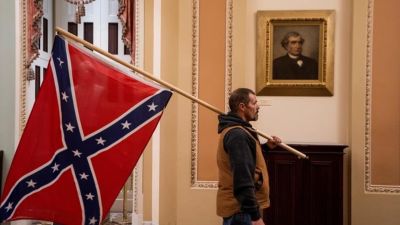
CHICAGO, ILLINOIS - FEBRUARY 18: Store closing signs hang in the window of a Pier 1 imports store on February 18, 2020 in Chicago, Illinois. The struggling retailer announced today that it had filed for bankruptcy and was closing 450 stores. (Photo by Scott Olson/Getty Images)
I am returning to the coronavirus beat today, and look what’s here to greet me: 100,000 new cases in a day, the first time that happened. I’d have thought it’d be more poetic for that to occur on Election Day, but alas, it was the day after. And with Donald Trump finally treating something like a war—the recount of votes that didn’t choose him for president—I would expect no policy changes from the top or even in the states to get a handle on this. We are riding without brakes, headlong into a fantasy of herd immunity. The vaccine couldn’t come sooner, because common sense won’t save us.
You can expect some economic erosion to accompany the case spike, even if it was just through lower productivity from those infected and sidelined. Of course, you would expect a demand depression as well, as at least some people hole up in their homes and stay out of restaurants and stores.
The economic indicators I’ve been looking at this week have definitely made me anxious. AMC Theaters, with sales revenue down 91 percent, is desperately trying to fend off bankruptcy, while two major mall landlords filed for it. So did Friendly’s, the east coast ice cream chain of my youth. Nike is the latest large employer to cut jobs at its headquarters. Weekly initial unemployment claims just aren’t going down that much, and there are 21.5 million Americans receiving some form of unemployment.
More than half of those unemployment recipients will lose benefits completely at the end of the year. Two programs created by the CARES Act—Pandemic Unemployment Assistance (for gig workers and independent contractors) and Pandemic Emergency Unemployment Compensation (extended benefits)—currently cover 13.3 million people, and they expire December 31.
So it’s therefore interesting, and important, that Mitch McConnell is now calling an economic relief package his top priority in the lame duck session that will begin next week. “We need another rescue package… and we need to do it before the end of the year,” McConnell said. This is a reversal from when he delayed talk of stimulus to 2021.
What exactly is different between doing a stimulus in the lame duck as opposed to next year? On the one hand, McConnell will have at least one more Republican senator on his side in the lame duck. He also has a Republican president. On the other hand, the GOP picked up seats in the House, giving Nancy Pelosi (or a replacement?) less of a free hand in negotiations. I could argue either way, actually, for when McConnell would be in a better position for stimulus. Of course, there’s an outside shot, however remote, that Democrats sweep special elections in Georgia in January and McConnell has no bargaining power. And that might be enough to tip the scales.
Doing stimulus now means it probably looks a lot like McConnell’s last offer, which topped out at around $500 billion. McConnell certainly doesn’t have to listen to a lame duck president’s request, and the negotiations will more likely proceed between the House and the Senate, rather than the House and the White House.
But McConnell also wants something else: an omnibus spending bill before the December 11 deadline for funding the government, which gets appropriations done through September. That does a couple things. First of all, it locks in the budget so Biden’s incoming team doesn’t get any say on it. Second, on the (again, remote) chance of a 50-50 Senate, it removes the possibility (I think, not entirely certain) of budget reconciliation for the 2021 budget year. That would mean that a Democratic trifecta would have to wait until later in the year for a reconciliation bill.
The omnibus, then, is a pretty big prize, enough for Pelosi to negotiate something better than McConnell’s skinny relief bill. For the first time, McConnell suggested that some state and local relief could be included in the package, and sounded relatively conciliatory (“I don’t get to make the final decision… we have to deal with the Democrats”), though of course this was for media consumption. He did add his desire to do targeted rather than blanket relief, so I’d say the $1,200 checks are out. The working assumption is that you’ll get a final compromise in the $1 trillion range.
Investors should be disappointed with that, because it’s highly unlikely to fill the hole in demand needed to keep the economy upright, but they’re so happy with the notion that they won’t have to give back any tax cuts that they don’t care. So there’s no real outside pressure to move the number that much higher, and liberal minds are more concentrated on getting votes counted and parrying lawsuits at the moment.
It’s definitely positive that we may not go into next year without any fiscal aid, and just extending those two unemployment programs for millions of people would be unequivocally positive. It is depressing though: twelve years after the financial crisis, we’re staring once again at a too-small economic rescue, in a moment when other countries are stepping up for their citizens. Look at the UK, where Boris Johnson is guaranteeing payroll support. This is a case that’s not necessarily driven by neoliberal lowering of ambitions, however; it’s driven by the lack of leverage from the results of Tuesday night. Elections have consequences.
Days Without a Bailout Oversight Chair
223.
Today I Learned
- Some election stuff: Here’s the Cook Political Report’s National Popular Vote tracker. Turnout is on pace to be the highest since 1900. One survey finds a “shy Trump” phenomenon. Contouring a Biden cabinet to Mitch McConnell’s whims would be a huge mistake. Perhaps the biggest consequence of the night: Democrats falling short in state legislatures, giving Republicans a freer hand in redistricting.
- The long-term effects of COVID finally being observed and analyzed. (Wall Street Journal)
- ICYMI, Deborah Birx’ face-saving letter about the pending threat over the next couple months. (Washington Post)
- What it’s like to vote when you have COVID. (Detroit Free Press)
- Denmark killing all its minks to stop a mutated virus from jumping to humans. (Politico Europe)
- Medical bills now come with a “COVID Fee.” (New York Times)




